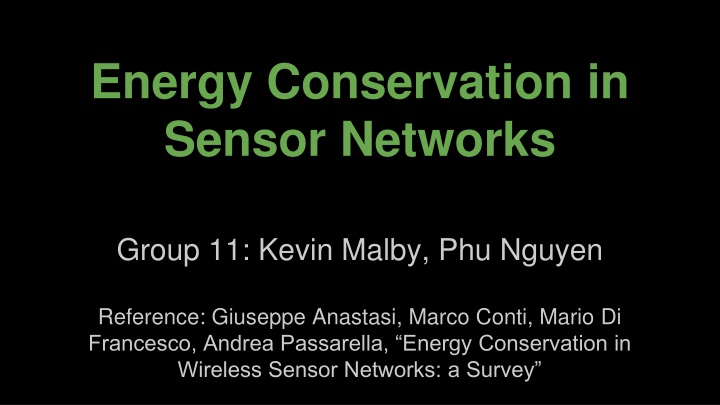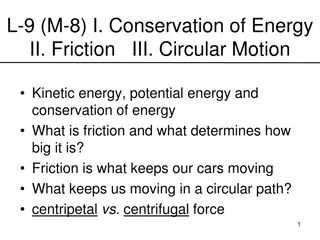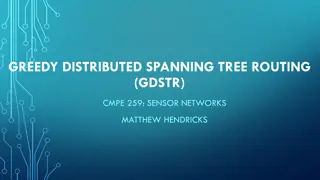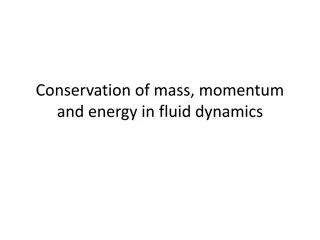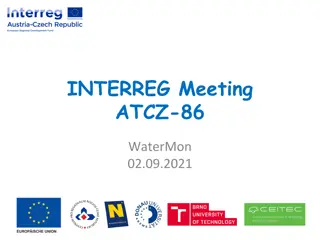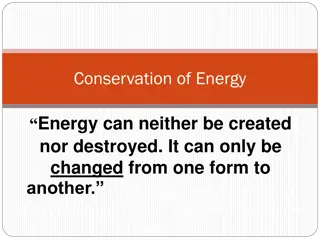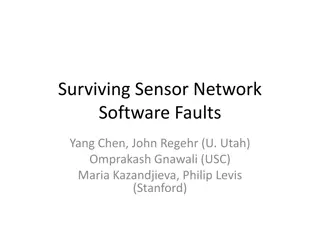Energy Conservation in Sensor Networks
This paper examines various strategies for energy conservation in wireless sensor networks, offering insights into the latest advancements in the field.
Download Presentation

Please find below an Image/Link to download the presentation.
The content on the website is provided AS IS for your information and personal use only. It may not be sold, licensed, or shared on other websites without obtaining consent from the author.If you encounter any issues during the download, it is possible that the publisher has removed the file from their server.
You are allowed to download the files provided on this website for personal or commercial use, subject to the condition that they are used lawfully. All files are the property of their respective owners.
The content on the website is provided AS IS for your information and personal use only. It may not be sold, licensed, or shared on other websites without obtaining consent from the author.
E N D
Presentation Transcript
Energy Conservation in Sensor Networks Group 11: Kevin Malby, Phu Nguyen Reference: Giuseppe Anastasi, Marco Conti, Mario Di Francesco, Andrea Passarella, Energy Conservation in Wireless Sensor Networks: a Survey
Motivation For Energy Conservation Sensor nodes are typically small and must run on battery power or self-generated power They collect sensor information, process and store this information, and relay it to a central server for further processing. All of these processes and components require energy They must also generally remain on for extended periods of time, often without human maintenance Without energy conservation techniques, sensor nodes may not be able to perform their tasks effectively
General Approaches to Energy Conservation Three Primary Techniques Duty-Cycling o Focused on networking subsystem o Switch the radio transceiver between on/off states according to whether or not data needs to be transmitted Data-Driven Conservation o Due to temporal/spatial correlation between data samples, often information being transmitted is redundant and need not be sent o If sensor itself is power hungry, intelligently adjust sampling rate while retaining accuracy Mobility Approach o Reduces the hop distance for transmission and balances the load within the network, ensuring specific nodes are not overworked
Duty Cycling Energy Conservation Schemes 1. Topology Control a. Location driven b. Connection driven 2. Power management a. Sleep/awake protocols b. MAC protocol with low duty-cycle
Topology Control: Location driven Geographical Adaptive Fidelity GAF Sensing area is divided into small virtual grids. Nodes in each two adjacent grids can communicate with each other. Only 1 node within the same grid need to stay active Geographic Random Forwarding GeRaF Nodes switch back and forth between sleep and awake periodically Each node has its own priority basing on its distance to the destination Active nodes in the highest priority regions are selected to relay packages. Backoff if collision occurs GPS is needed
Topology Control: Connection driven Span o Elected Coordinators with the Coordinator eligibility rule o Backup delay: each node generate its own delay time ASCENT (Adaptive Self-Configuring Sensor Networks Topologies) o Each node decides to stay active or inactive based on local information o Initially, only some nodes are active. o When the sink node or active nodes experience with unacceptable package loss rate, they will send out help messages Naps o Decentralized topology management protocol.
Sleep & Wake Conservation Energy conservation can be achieved without the need to manage network topologies Controlling sleep/wake cycles of sensor nodes accomplish this by implementing protocols at either the network or application layer o There are three primary categories under which sleep/wake protocols fall: 1. On-Demand 2. Scheduled Rendezvous 3. Asynchronous
Sleep & Wake Approaches On-Demand Protocols o Nodes should only wakeup when needed by other nodes Generally achieve this by utilizing multiple radios with different power requirements Scheduled Rendezvous Protocols o Neighboring nodes all wakeup in accordance to a scheduling algorithm Woken nodes will remain active for a short period of time to communicate with their neighbors Asynchronous Protocols o a node wakes up and communicates when it wants
On-Demand Scheme Nodes are generally in monitoring state (low-energy) and only switch to transfer state (high-energy) when event detected STEM (Sparse Topology and Energy Management) o Two radios: one for wakeup, one for data transmission o Wakeup radio controlled through duty cycle and sends a stream of periodic beacons when it has to communicate with neighboring (target) nodes o Once the target receives a beacon, it will activate its data radio and send a wakeup ACK to the initiator node o The initiator node will activate its data radio upon receiving this acknowledgement and transfer can begin o Two flavors of STEM: STEM-B and STEM-T
On-Demand Scheme (Cont.) STEM can be combined with topology control protocols for greater power conservation o GAF in combination with STEM has been shown to reduce energy consumption in a sensor network to ~1% of its original utilization STEM suffers from large wakeup latencies due to its asynchronicity and general low-bandwidths of sensor networks o An alternative On-Demand protocol that tries to balance energy savings and wakeup latency is Pipelined Tone Wakeup (PTW) PTW does this by delegating responsibility of tone detection to the sender node instead of the receiver. A wakeup tone is only sent when an event is detected
Low Duty Cycle MAC Conservation TDMA main idea o Time is divided into frames o Each frame has one or more time slots o Each node is assigned one or more slots per frame o Nodes use assigned slots time transmit/receive data o Nodes turn on their radio during their time slot. TDMA Drawbacks o Limited flexibility and scalability o Tight synchronization o Sensitive to interference o Perform worse in low traffic conditions
Low Duty Cycle MAC Conservation Contention-based MAC protocols o More robust and scalable o Low delay and easily adapt to traffic conditions o Weakness: energy expenditure is high because of contention and collisions Hybrid o Combine the strength of TDMA-based and contention- based protocols while offsetting their weaknesses o Complex to implement with a high number of nodes
Conclusions While topology control protocols increase the performance of a sensor network, they often require GPS units which may make the project not affordable On-Demand power conservation protocols are most effective because nodes are only active when they need to communicate and there is little impact on latency However, the other methods of energy conservation (rendezvous and asynchronous) are less expensive Many methods to reduce energy consumption, duty cycle controlling being one of the most prominent.
